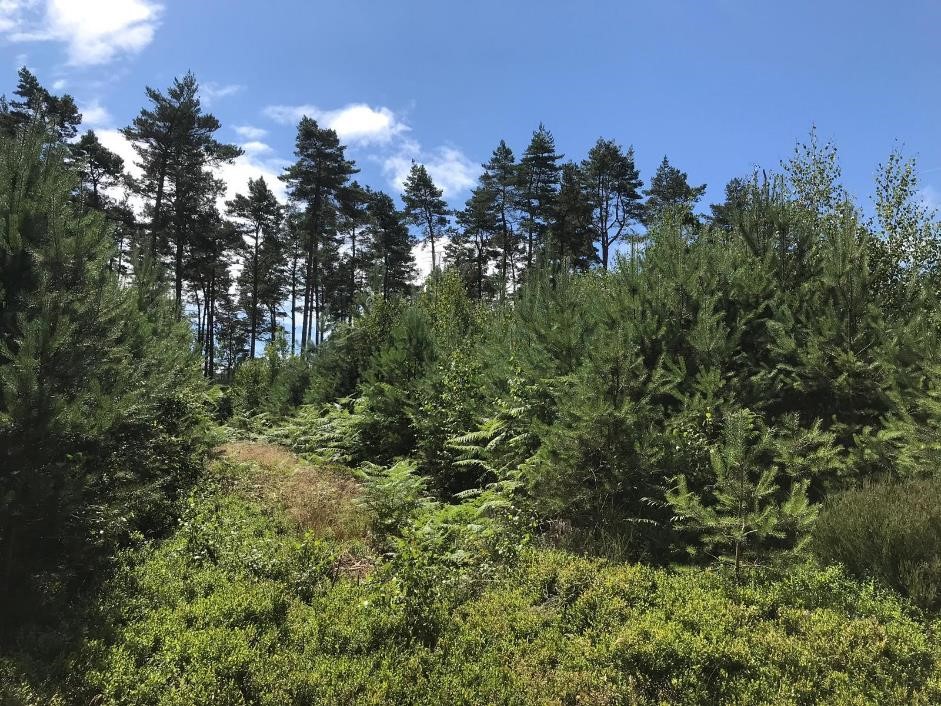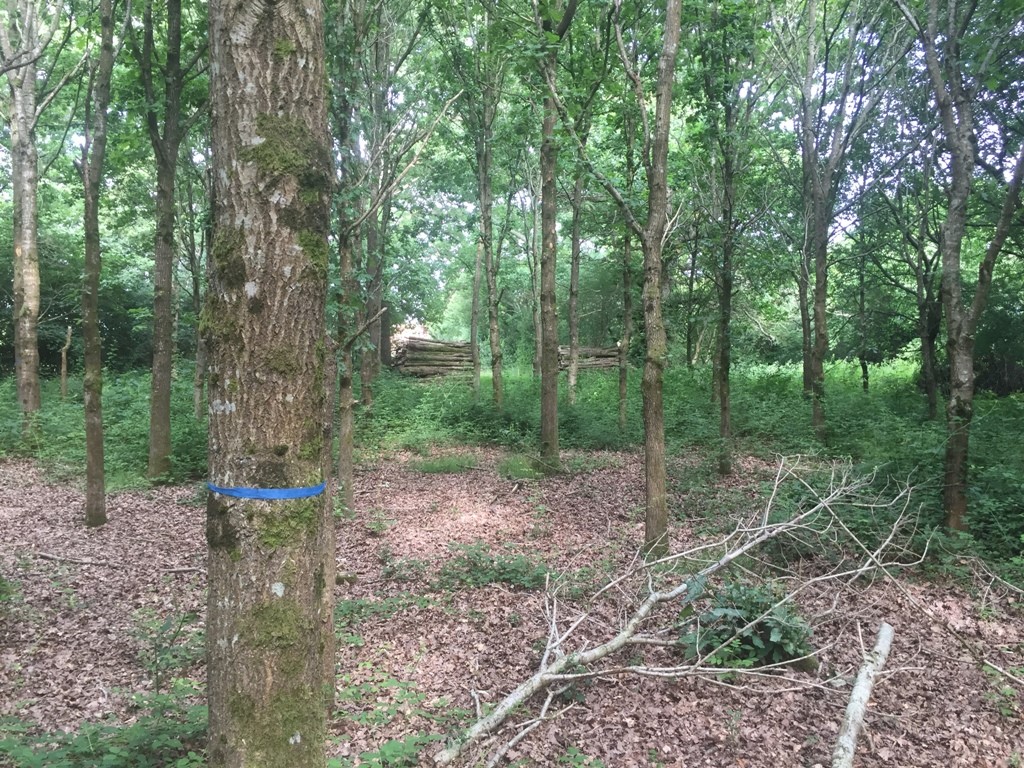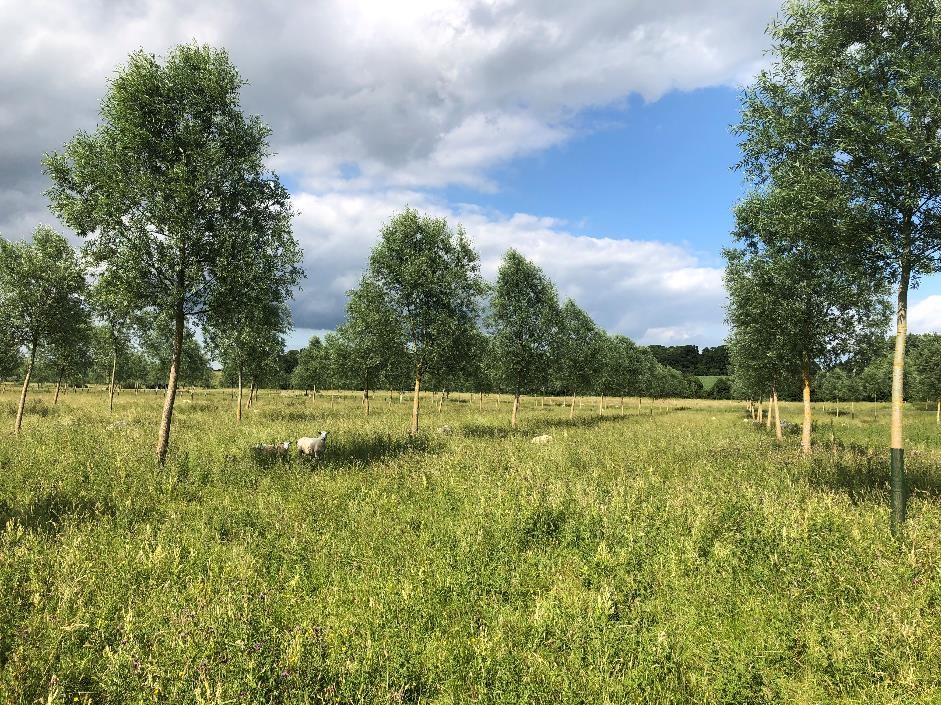Shere Manor Receive Top Award for Excellence in Silviculture
The RFS Silviculture Award 2019 goes to Shere Manor Estate in Surrey where natural regeneration is abundant; silver goes to Heathlands Copse on the Cowdray Estate in West Sussex where formerly unproductive arable land is now planted with oak and a Certificate of Merit goes to an agroforestry scheme of young cricket bat willow stands undergrazed by sheep at Hole Park Estate in Kent.
1. Shere Manor Estate, Bray Family, Shere, Surrey

The mature Scots pine stands on the estate are of unknown provenance, but have grown well, are of good form, and regenerate readily. Natural regeneration is therefore used to replace stands after clearfelling. The ground is prepared either by raking and burning or by mulching, and the next 2-3 years will be spent keeping bracken under control; seedlings of Scots pine, mixed with some birch, then appear at high density. In the 12-year-old prize winning stand, access racks have been put in to allow inspection of the pine crop and hand cutting of the birch, for which there is a local market (making jumps for racecourses). An early thinning of the pine for biomass will use whole-tree harvesting, the first thinning for roundwood will be at age 20, and products from future harvests will be marketed to well-established outlets in southern England.
Andy Wright, Director Forest Manager, English Woodlands Forestry Ltd, said: “It is a huge honour to be awarded this award for the woodland management undertaken at the Shere Manor Estate over the last 12 years. To be recognised in this way is extremely pleasing and testament to the vision of the Bray family and Estate Manager Alex Wilks of Batcheller Monkhouse.
“My colleagues at English Woodlands Forestry Ltd who have been involved in this project can also rightly be very proud of their achievements. Special mention should go to Tom Compton who started the ball rolling back in 2006/07, but also to David Funnell and Paul Snowdon who have helped me in implementing the award winning management.”
2. Heathlands Copse, Cowdray Estate, Midhurst, West Sussex

This stand was planted in 1991 on unproductive pasture, with the long-term aim of producing high quality oak sawlogs. Bare-root plants of oak – Quercus robur – of unknown provenance were pit-planted at a spacing of 2.5 m, protected with tree guards, and hand weeded. No beating up was required, and the lower stems of all trees were pruned after removal of the tree guards. Potential final crop trees have been identified and high pruned, and a first thinning carried out by a local firewood contractor, removing co-dominants adjacent to final crop trees as well as wolf trees. The next thinning will be in 5-6 years’ time and may be followed by underplanting, to provide side shade to the stems of final crop trees and to diversify the stand.
Richard Everett, Forest Manager said: “Cowdray has a long history of positive silviculture and we are very proud to receive this award that recognises our ongoing commitment to growing productive, well managed woodlands for the future.”
More information on these woods at www.cowdray.co.uk/woods
3. Certificate of Merit: Hole Park Estate, Edward Barham, Rolvenden, Kent

Trees are planted on a 10m matrix and as soon as they are able to withstand livestock, sheep are allowed to return. The grass beneath is managed within Mid Tier Countryside Stewardship.
Judges were impressed by the young cricket bat willow stands at Hole Park Estate which were planted over five years, from 2014 to 2019. Sets (unrooted cuttings, 5m in length) have been inserted at 10m spacing in 1.2m mesh guards. No establishment operations or thinning is required, but pruning is essential; it is done by hand rubbing young buds at the time of bud burst and by cutting with secateurs in the autumn.
Trees will be felled when they reach target diameter, from age 12 onwards, and predicted gross income at the end of the first rotation (age 16) is £25,000 / ha.
Edward Barham of Hole Park Estate said: “I am really delighted to win this commendation. These plantations do not look like true forestry and there was concern that they would not qualify for entry into the competition. They demonstrate a modern way of growing trees in harmony with agriculture, agroforestry. Cricket Bat Willows are some of the highest value timber growing in this country, especially given the time that they take to maturity. When run in parallel with a range of other income streams, not least from the farming beneath them, they demonstrate an innovative approach to land-use that I am delighted to receive recognition for.”

